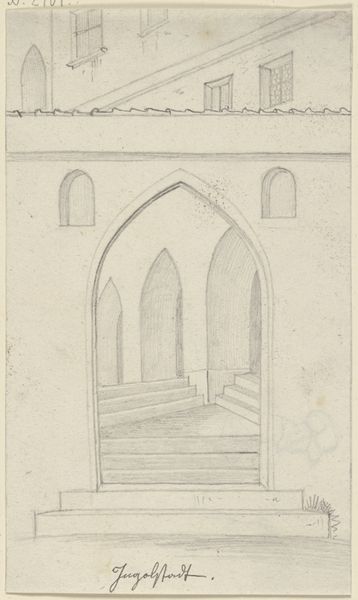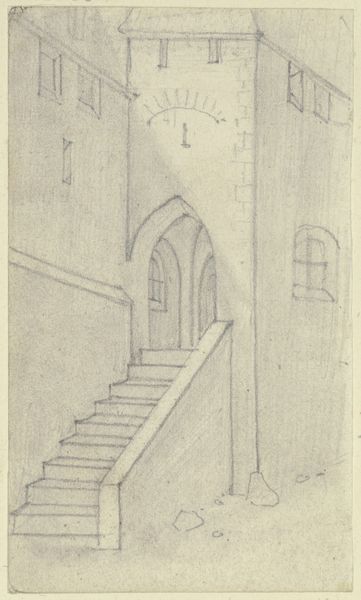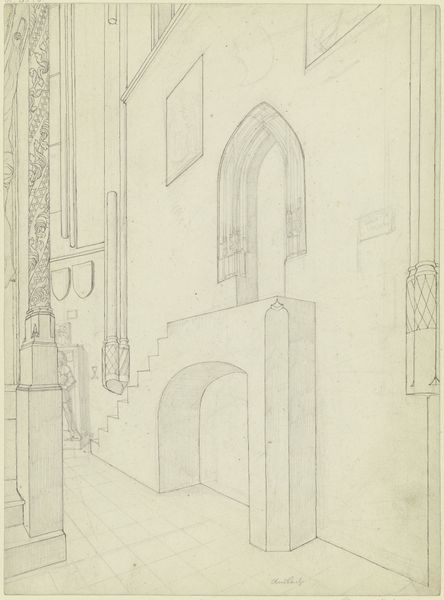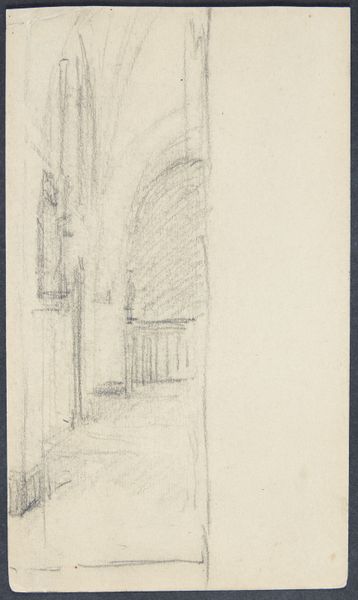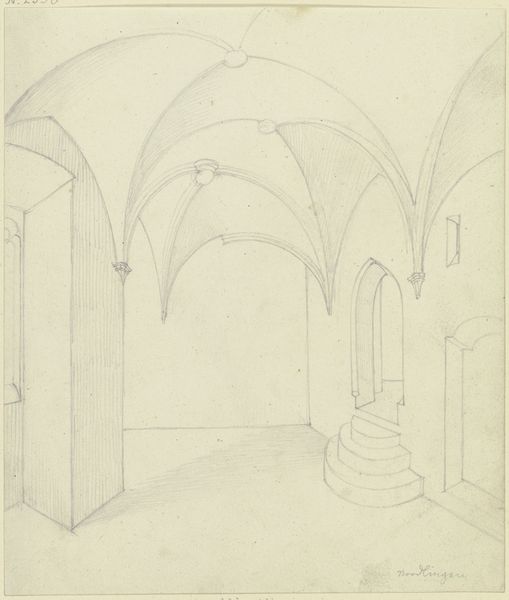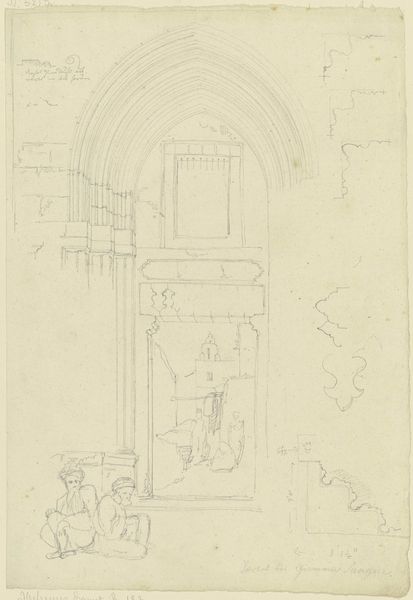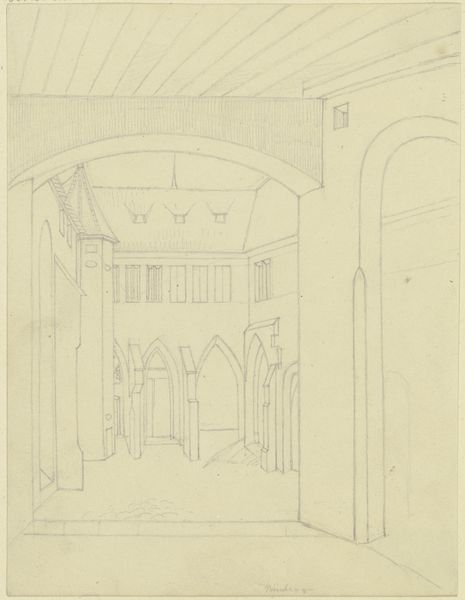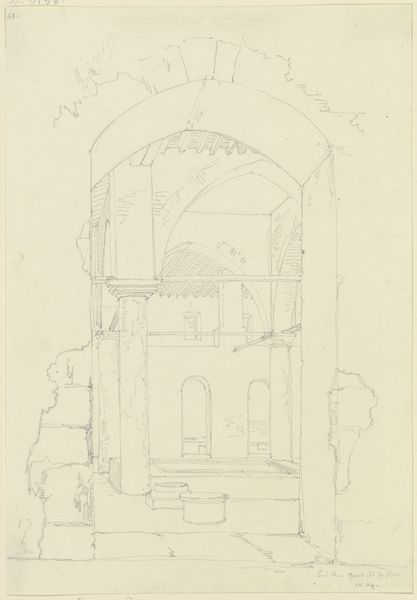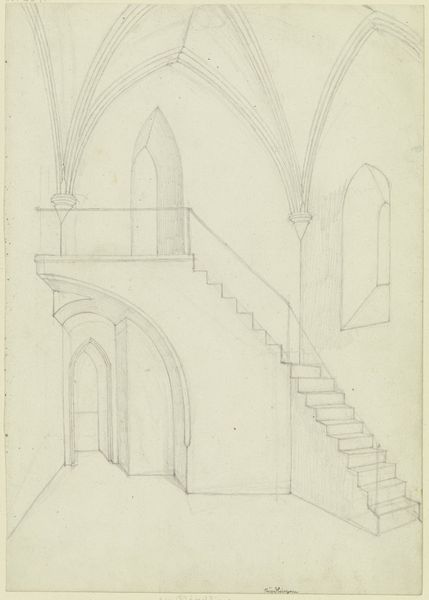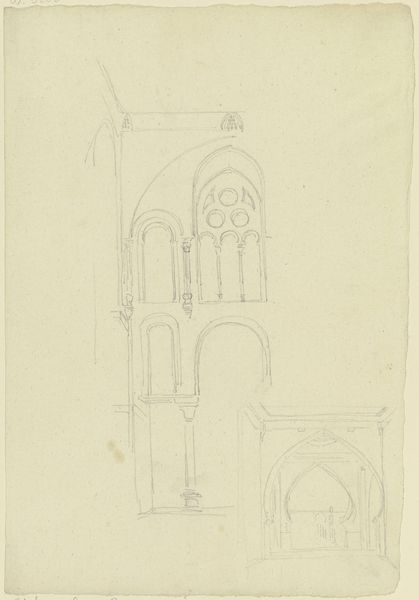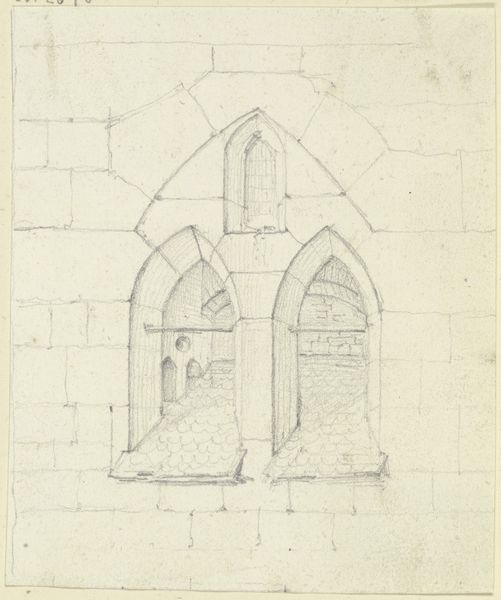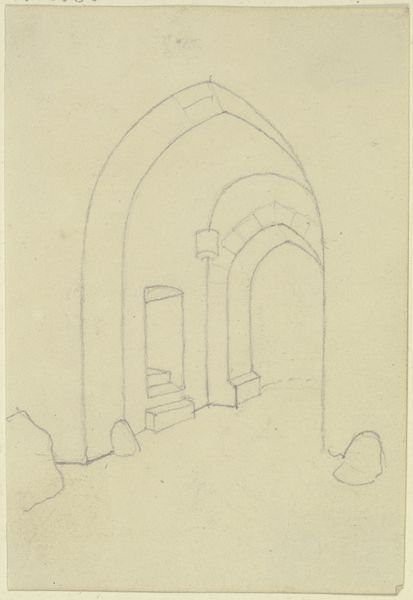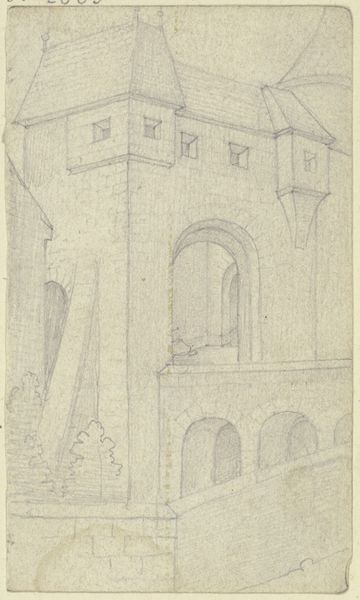
drawing, paper, pencil, graphite, architecture
#
drawing
#
landscape
#
paper
#
form
#
pencil
#
line
#
graphite
#
architecture
Copyright: Public Domain
Karl Ballenberger made this sketch of a round-arched passage with graphite on paper sometime in the first half of the 19th century. The quality of a graphite drawing resides less in its material value and more in the skill required to wield it. Here, the artist has used graphite to render different textures and create a sense of depth, especially in the receding archways. The marks vary in pressure to suggest form and light, using a traditional drawing technique known as hatching. The architectural elements of the passage itself also speak to labor and social context. The brickwork and stone floors suggest a time-consuming manual process, where each piece had to be carefully placed and fitted. This kind of architectural rendering requires the skilled hand of a draughtsman, and is as much about the social history of labor as it is about the artist's individual vision. By focusing on the materials, making, and social context of both the drawing and the architecture it depicts, we can fully appreciate the significance of this artwork, blurring the lines between fine art, craft, and social history.
Comments
No comments
Be the first to comment and join the conversation on the ultimate creative platform.
